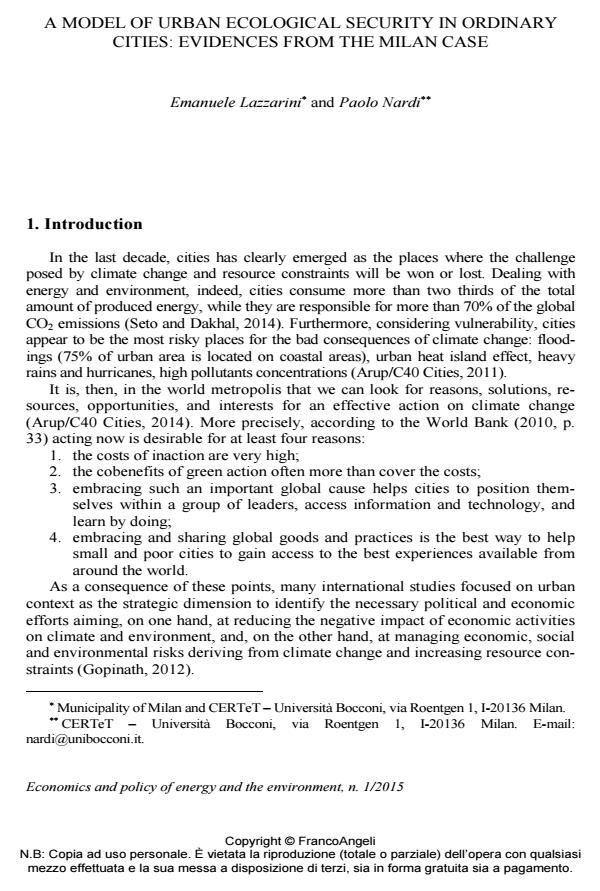A model of urban ecological security in ordinary cities: evidences from the Milan case
Journal title ECONOMICS AND POLICY OF ENERGY AND THE ENVIRONMENT
Author/s Emanuele Lazzarini, Paolo Nardi
Publishing Year 2016 Issue 2015/1
Language English Pages 13 P. 29-41 File size 177 KB
DOI 10.3280/EFE2015-001003
DOI is like a bar code for intellectual property: to have more infomation
click here
Below, you can see the article first page
If you want to buy this article in PDF format, you can do it, following the instructions to buy download credits

FrancoAngeli is member of Publishers International Linking Association, Inc (PILA), a not-for-profit association which run the CrossRef service enabling links to and from online scholarly content.
In the last decade, cities has clearly emerged as the places where the challenge posed by climate change and constraints on energy and environmental resources will be won or lost. According to Hodson and Marvin (2009), world cities tend to conform their visions, strategies and policies around a common paradigm of environmental security and sustainability, named "Secure Urbanism and Resilient Infrastructure" (SURI), based on the strategic protection of cities, a new autarky and the development of global urban agglomerations. What about ordinary cities? This case study on Milan offers a very interesting test field to provide how the SURI model does not fit ordinary cities. Results show that Milan still lacks of a recognized and legitimized subject, capable of coordinating a process of urban visioning and narrative building; at the same time an alternative paradigm emerges, based on bottom-up initiatives.
Keywords: Urban ecological security, climate change, ordinary city
Jel codes: Q20, Q54, R00
- Coupling fuzzy multiple attribute decision-making with analytic hierarchy process to evaluate urban ecological security: A case study of Guangzhou, China P.P. Gao, Y.P. Li, J. Sun, H.W. Li, in Ecological Complexity /2018 pp.23
DOI: 10.1016/j.ecocom.2018.03.001
Emanuele Lazzarini, Paolo Nardi, A model of urban ecological security in ordinary cities: evidences from the Milan case in "ECONOMICS AND POLICY OF ENERGY AND THE ENVIRONMENT" 1/2015, pp 29-41, DOI: 10.3280/EFE2015-001003